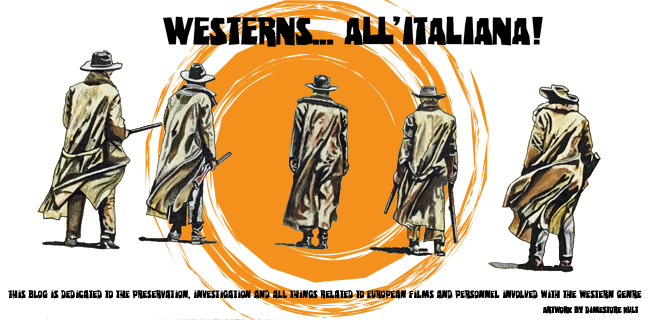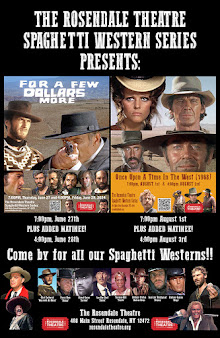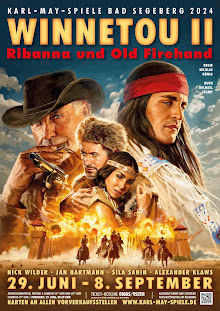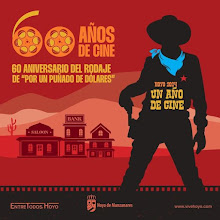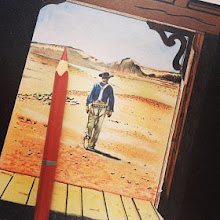Quinlan
By Elisa Battistini
May 16, 2024
“The Damned”
By Roberto Minervini
After six years, Roberto Minervini returns to directing
with The Damned, tackling for the first time an openly "fictional"
work, and immersing the viewer in the American wilderness during the Civil War.
In competition in Un Certain Regard and in cinemas.
In the company of wolves
Winter 1862: During the Civil War, the Northern army
sends a small group of volunteers to the West to map and scout the land that is
still off the beaten track. But among the mountains and barren expanses, the
handful of men are not alone. [synopsis]
Six years after his last feature film, Roberto Minervini
returns to the big screen with The Damned, presented in Competition in the Un
Certain Regard section of the Cannes Film Festival and his first fiction film.
Or rather, his first work openly "staged" since the action took place
in the USA in 1862, so we cannot even remotely presume to be in front of a
documentary: the director's choice is intelligent and effective, but above all
it is capable of reviving precisely that genuinely naturalistic tone that Minervini
seemed to have lost a little in Louisiana (2015) and in What to do when the
world is on fire? (2018). The "documentary of creation", a hybrid
space between direct shooting in front of reality and fiction in the strict
sense in which the author has moved, here gives way to actual writing, to
costume opera, to the "western" story and what comes out of it is the
renewed precision of the directorial gesture in restoring environments, faces,
feelings and without artifice one would like to say. In doing this, Minervini
seems to show, in the context of fiction, how much cinema can express the
intimate and living essence of phenomena and, equally, how this expression is
always ineluctably technical and planned in whatever "genre" one
moves. In fact, it is significant that the author has returned to the Carlson
family of Stop the Pounding Heart (2013), "taking" three characters
from the documentary on the very religious clan and now placing them in the
fray of the American Civil War: the choice underlines both the greater
emotional closeness between this film and that film, and how much this story
seeks the same clarity as that documentary act. So much so that, even in The
Damned, the Carlsons (father and two sons) are a very religious triadic
nucleus, as if they had migrated from one work to another, remaining to some
extent themselves. To rigorously pursue this directional motion, Minervini
works on two vectors: on the one hand, the dryness of the weave, to say the
least minimal; on the other hand, the admirable care for the visual rendering,
which is entrusted with the stratification of the work.

In the beginning, a small pack of wolves is meticulously
preparing their meal: the teeth remove the hair and skin of a dead fawn and
then move on to emptying the entrails. Minervini frames the documentary and
symbolic scene for a couple of minutes before moving on to fictional narration,
already suggesting, however, that the story will have to do with the feral
nature not of animals but of man, who in fact is portrayed in the Civil War. In
this context, the Northern army has sent a group of volunteers to go to the
West, that wild West that was colonized copiously at the end of the internal
dispute between North and South: the soldiers – no female character appears in
the film, defining The Damned as a work also on a belligerent male – are
pioneers of pioneers, the vanguard of the western (including that of cinema)
and sent, of course, to the slaughterhouse. The explicit violence is also
consigned almost exclusively to the animalistic prologue, always remaining
off-screen or out of focus elsewhere: the enemy is at the gates but is never
seen in a definite way and the film does not reach a climax, unfolding instead
in a sensitive search made up of faces, arid and snowy landscapes, daily
actions while waiting for hell to break out (The Desert of the Tartars it's
always around the corner). The outpost finds a clearing in which to camp and
from which to move to proceed further: the first sequence tells the daily life
of the group with dialogues about rifles and Colts, poker games, prayers,
sighting methods among the heights, collection of stones containing that gold
that will be one of the reasons for the conquest of the lands of the natives.
The men, unaware, are surrounded and after the adage come the bullets (at the
hands of other Americans): what follows is a pounding shaking that will not
lead to a great battle, but rather to a warning after which the handful will
send four soldiers to explore the space beyond the mountains to figure out what
to do. The group then splits (the four will then split again), pushing some
"forward" in a sort of absolute dispersion of the collective and of
the sense. In a film of great rarefaction, Minervini manages to make us feel
every single element: the chill of the water in which we wash, the sound of
bullets, the fear, the anguish of the horses, the tone of the air, defining The
Damned as a work that makes sensitive intensity its dominant feature. Looking –
as in Stop the Pounding Heart – to the painting of Frederic Ramington or to
Malick in Days of Heaven and The Thin Red Line, but also to Tarkovsky (and
perhaps also to Italian Risorgimento painting), Minervini relates the solitude
of man to a landscape that can be a testimony of God as well as of his total
absence, raising questions (very topical) about the war that is always internal
and about the fragility of each one in the face of its unacceptable violence.
But also relating man to wolf, since we will see some soldiers dissecting a
buffalo: the feral side is connected to our own animality, yet no one really
knows why it is there and some try to provide motivations with short dialogues
that express more solidarity in the lack of meanings than the real reason for a
conflict both internal (the Civil War) and indecipherable (the conquest of the
West).
It is therefore in the pictorial and visual intensities,
in the portraiture of anonymous soldiers (apart from Noah and Judah Carlson)
caught in acts that never become action, that the value of The Damned must be
recognized, a different but concrete "documentary of creation", in
which the fictional mise-en-scène is indubitable but in which the ability to
express a possible experience is not lacking (indeed it comes out enhanced).
keeping the viewer always at the side of this small group and showing Minervini
an allusive sensitivity that overturns the gaze with which the director had
brought to light his last, extremely explicit, extremely brutal works. A
musical and compositional film, so much so that it is interesting that it is
the director of photography, Carlos Alfonso Corral, who signs the beautiful and
enveloping soundtrack: The Damned is a work that with great brilliance deals
with war and its absurdity, the idea of God in relation to an ambiguous human
nature, but in which it is up to the viewer to grasp the beating heart. You
will be able to find it if you listen to a score that develops in an impossible
but surprisingly perceptible "live recording".

I dannati – Italian title
Les Damnés – French title
The Damned – German title
The Damned – English title
A 2020 Italian, Belgium, U.S.A film co-production [Okta
Film (Trieste), Pupa Films, Rai
(Rome),
Michigan Film, BeTV (Brussels)]
Producers: Paolo Benzi, Denise Ping Lee
Director: Roberto Minervini
Story: Roberto Minervini
Screenplay: Roberto Minervini
Cinematography: Carlos Alfonso Corral [color]
Music: Carlos Alfonso Corral
Running time: 88 minutes
Story: Winter 1862. In the midst of the Civil War, the
U.S. Army sends a company of volunteer soldiers to the western territories,
with the task of patrolling the unchartered borderlands. As their mission
ultimately changes course, the meaning behind their engagement begins to elude
them.
Cast:
Scouts - René W. Solomon, Jeremiah Knupp, Noah Carlson
Sergeant Yim Carlson, Timothy Carlson
With: Judah Carlson, Cuyler Ballenger, Chris Hoffert,
Bill Gehring
Stunt coordinator: Daniele Balconi, Alessandro Riva
Stunts: Antonio Catalano, Riccardo Geremia, Dumitru
Stoian
Trailer link: https://www.youtube.com/watch?v=WQ0RSCDWGh8
